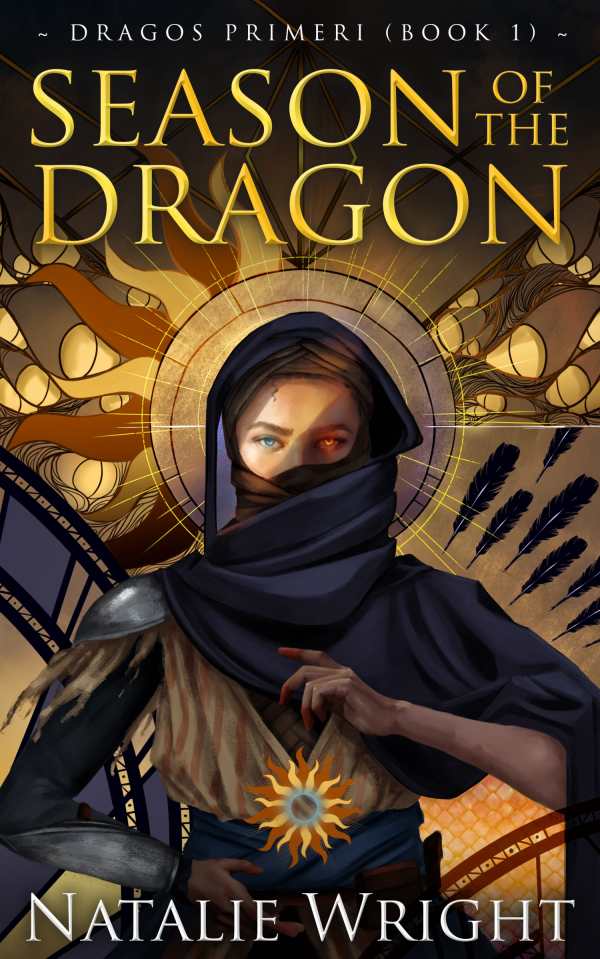Season of the Dragon
Season of the Dragon is a fascinating and mysterious fantasy novel that follows a grieving woman’s quest.
In Natalie Wright’s fantasy novel Season of the Dragon, a woman goes on a quest to avenge her father’s death.
Quen is not married or tied to a herding clan. Though she is considered “twice blessed” because of her two eye colors, she is unsure about what path she wants to take in life. Though her father’s mantra to maintain “still waters” runs in her head, she feels pulled between worlds.
When a mysterious woman presents Quen’s father with a scroll and demands return on her investment, Quen wonders if answers to her burning questions are forthcoming. Her father refuses the woman; then Quen and her brother, Rhoji, are caught in a sandstorm, and a dragon destroys their hometown and takes their father’s life. Angry and in mourning, Quen joins a ragtag bunch of mercenaries. As she journeys with them, she begins to recognize the usefulness of the internal qualities that she once considered parasitic and to come to terms with her dueling natures. Indeed, in chasing the dragon that killed her father, she is made to embrace her own inner demons, which reveal her true path.
The mystery regarding Quen’s soul, to which she must reconcile herself, moves the story forward. Quen is the novel’s focus; her internal arguments dominate, even during her travels with the mercenaries. She is also the best-developed person in this volume, and her inner voice comes out on top in most instances. Outwardly, she contends with being captured and has a short romance with a hulking mercenary companion, but it seems that these events are also a result of who she is at her core. She is, in effect, a womb, destined to “give birth” to the soul that her father wished she could suppress; this conflict consumes the book.
At the same time, Quen’s world is introduced as a fascinating and mysterious place. Its overarching class system is revealed in the different ways that people dress: Quen, for example, wears several layers of leather clothing and a headscarf to protect her nose and eyes from the dust storms in her home village, Solia; elsewhere, people of higher statuses wear sheer dresses and robes, or gowns made of live butterflies. In many cases, while people may look beautiful on the outside, their insides are revealed to be much more sinister.
The sky, earth, and moons are all personified in the book, making for a rich backdrop to Quen’s tale—laying the groundwork for what’s yet to come in future series volumes. This development extends to the book’s deities: Juka, the goddess of the wind, is an unpredictable trickster, and her presence is referenced during the book’s sandstorms. However, the names of the multiple spirits, villages, and articles of clothing mentioned in this book sometimes sound too similar; while this can be interruptive in the course of the story, the differences are clarified in the book’s helpful glossary of terms.
The fantasy novel Season of the Dragon is a vivid series opening that gives new meaning to embracing one’s inner demons.
Reviewed by
Erin Nesbit
Disclosure: This article is not an endorsement, but a review. The publisher of this book provided free copies of the book and paid a small fee to have their book reviewed by a professional reviewer. Foreword Reviews and Clarion Reviews make no guarantee that the publisher will receive a positive review. Foreword Magazine, Inc. is disclosing this in accordance with the Federal Trade Commission’s 16 CFR, Part 255.

